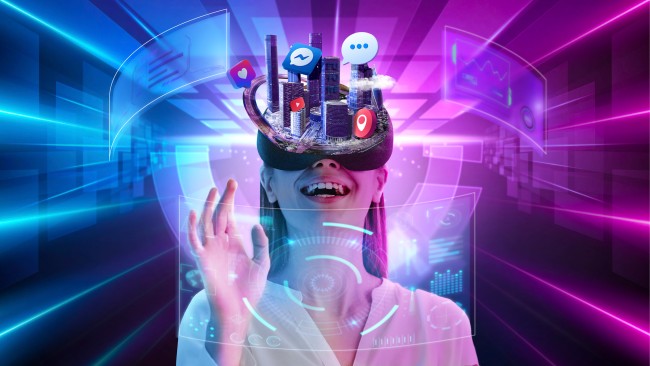
As the world becomes more digitized, artificial intelligence (AI) continues to reshape industries, redefine capabilities, and reimagine the realms of possibility. One of the most promising and exciting areas in AI is generative AI, a technology that has the potential to transform the way we create and innovate.
What Is Generative AI?
Generative AI is a subset of artificial intelligence that uses machine learning models to generate novel, creative outputs. It encompasses models that can create various types of content – from images and music to text and even code – that was not part of their training data, but is similar in structure or style.
Generative AI moves beyond the traditional use of AI for classification and prediction tasks. Instead, it can generate new data instances that resemble the training data. Its potential lies in its ability to create, invent, and innovate, making it an exciting development in the AI field.
The Mechanism Behind Generative AI
Generative AI models are predominantly built using neural networks, particularly deep learning models. Two of the most popular generative model architectures are Generative Adversarial Networks (GANs) and Variational Autoencoders (VAEs).
GANs involve two neural networks – a generator and a discriminator – that work together. The generator creates new data instances, while the discriminator evaluates them for authenticity. The two networks are trained together, with the generator improving its ability to create realistic data and the discriminator enhancing its ability to detect fakes.
On the other hand, VAEs generate new data instances by mapping input data into a latent space and then sampling from this space to create new outputs. The model is trained to recreate the input data, making it capable of generating similar but new data.
Applications of Generative AI
Generative AI has an array of exciting applications across industries:
1. Art and Music:
AI models can generate unique pieces of artwork and compose music. AIVA, an AI music composer, has been used to create soundtracks for films, while AI artwork has been sold in traditional auction houses.
The AI can even be used to assist you in creating art and music rather than just creating it themselves. For example, musicians now have access to software like this AI-powered chord generator like audiocipher which can help them create base melodies for their songs and provide new ideas for chord progressions.
2. Content Creation:

AI can write coherent and contextually relevant pieces of text, aiding in content generation. OpenAI’s GPT-4, a powerful language model, can write essays, answer questions, and even generate code.
3. Design:
Generative AI can help design physical products by exploring a wide range of design possibilities in a short period. Car manufacturers like General Motors are using generative design to create more efficient vehicles.
4. Pharmaceuticals:
AI can help generate molecules for potential drugs, accelerating the drug discovery process. Companies like Insilico Medicine are using generative AI to create new molecules for anti-aging treatments.
5. Fashion and Apparel Design:
Generative AI can play a role in fashion, creating unique and appealing clothing designs based on current trends, color palettes, and style preferences. Designers can leverage these AI-generated ideas as a starting point for their collections. Companies such as Stitch Fix are already using AI in their design process.
6. Video Game Development:
In video game development, generative AI can be used to create diverse and immersive environments, character designs, and even plotlines, enhancing the gaming experience. It allows for procedurally generated content, which can create a unique game environment for each player.
7. Virtual Reality and 3D Modelling:

Generative AI can help create immersive and realistic 3D models and environments for use in virtual reality. It can be particularly useful in architecture, where AI-generated models of buildings or landscapes can provide a more realistic view of the proposed design.
8. Personalized Advertising:
Advertising industry can also benefit from generative AI for creating personalized ad content based on the user’s preferences, browsing history, and other personal data, generative AI can generate unique ads targeted to individual customers, improving engagement and conversion rates.
9. Predictive Text and Autocomplete Functions:
Generative AI models can predict and generate text based on user input and can be seen in applications like email clients, where AI suggests complete sentences while composing an email, or in coding environments, where AI suggests the completion of a code line.
10. Film and Animation:
In the film and animation industry, generative AI can help generate realistic special effects, create new characters, or even write scripts. AI can generate storylines and dialogues, taking into account the style and themes of the specific genre, thus aiding the creative process.
Understanding the Implications
While generative AI holds significant promise, it also brings challenges. The ability of AI to generate realistic data has led to concerns about deepfakes in video and audio, which can be used for misinformation or malicious purposes.
It also brings about copyright issues, as it blurs the lines of authorship. As the technology develops, legal and ethical guidelines will need to evolve alongside it.
Moreover, training generative models requires substantial computational resources and expertise, making it currently inaccessible to some. Efforts are ongoing to make these models more efficient and easier to use.
Conclusion:
Generative AI is a groundbreaking development in the field of artificial intelligence. By generating new, creative outputs, it pushes the boundaries of what AI can achieve and opens up new opportunities for innovation.
As we continue to explore its potential, generative AI promises to play a significant role in the future of technology, creativity, and invention. With its broad range of applications and implications, generative AI is not only an exciting
